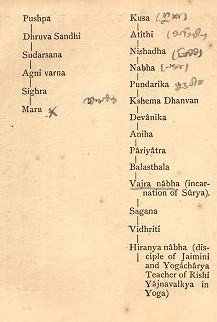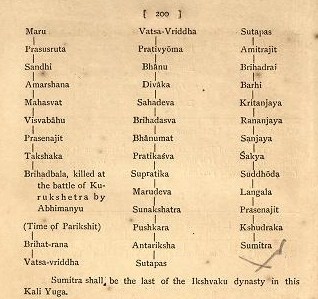Shakya
| Author:Laxman Burdak, IFS (R) |
Shakya (शाक्य) were a clan of Iron age India (1st millennium BCE), habitating an area in Greater Magadha, situated at present-day Nepal and northern India, near the Himalaya.
Variants
- Shakya शाक्य (AS, p.894)
- Shakya Ganarajya (शाक्य गणराज्य) (AS, p.894)
- Shakyas
- Sakya
- Sakyas
- Pali in the Brahmi script: 𑀲𑀓𑁆𑀬 Sakya, Sākiya, or Sakka,[1][2]
- Sanskrit: Śākya, Devanagari: शाक्य
Origin
Some scholars argue that the Shakya were Scythians from Central Asia or Iran, and that the name Śākya has the same origin as “Scythian”, called Sakas in India.[3][4]
Many scholars have opined Jat origin of the Scythians .(See Jat origin of the Indo-Scythians )
Jat clans
Shakya (शाक्य) is a gotra of Jats.[5][6][7]
Shakya Ganarajya
Scythian Sakas: Some scholars, including Michael Witzel[8] and Christopher I. Beckwith[9] argue that the Shakya were Scythians from Central Asia or Iran. Scythians were part of the Achaemenid army in the Achaemenid conquest of the Indus Valley from the 6th century BCE.[10] Indo-Scythians were also known to have appeared later in South Asia in the Middle Kingdom period, around the 2nd century BCE to the 4th century CE.[11]
The Shakyas formed an independent oligarchic republican state known as Śākya Gaṇarājya.[12] Its capital was Kapilavastu, which may have been located either in present-day Tilaurakot, Nepal or present-day Piprahwa, India.[13][14]
Gautama Buddha (c. 6th to 4th centuries BCE), whose teachings became the foundation of Buddhism, was the best-known Shakya. He was known in his lifetime as "Siddhartha Gautama" and "Shakyamuni" (Sage of the Shakyas). He was the son of Śuddhodana, the elected leader of the Śākya Gaṇarājya
Annexation by Kosala: Virudhaka, son of Pasenadi and Vāsavakhattiyā, the servant of a Shakyan chief named Mahānāma, ascended the throne of Kosala after overthrowing his father. As an act of vengeance for cheating perceived slights against his mother, a servant before her royal marriage, he invaded the Shakya territory, massacred them and annexed it.[15][16]
Bharhut: The ancient name of Bharhut was Vardavati. Ptolemy in his 'Geography' has mentioned a city named 'Bardaotis' situated on the route from Ujjain to Pataliputra, which according to Alexander Cunningham is related with Bharhut. According to Tibetan 'Dhulva' a Shakya monk named Samyak was expelled from Kapilavastu and came to Bagud and built a stupa here. Alexander Cunningham tells us that Bagud is Bharhut. It has been mentioned to be within the Ātavī province of the ancient literature. Samudragupta has mentioned Atavi in the list of places won by him. KP Jayaswal has identified Atavi with Bundelkhand and eastern Baghelkhand. [17]
Vardavati was a very prosperous town in ancient times and it was one of important centres of trade. The Koshambi ruler, Prasenjit's purohit has mentioned in the book 'Bavri', about this city as 'Balsevati'. A. Cunningham also supports this view. In samvat 197 (140 AD) the Bharshiv people became ruler of this region and renamed it as 'Bharbhukti' after them. The 'Bardadeeh' village , situated 2 miles north of Satna city, gets the name from Bardavati. Deeh means the abondoned place. [18]
In Mahavansa
Mahavansa/Chapter 8 writes ... In Sihapura, after the death of king Sihabahu, his son Sumitta was king; he had three Sons by the daughter of the Madda (Madra) king. Sumitta being old he sent his youngest son Panduvasudeva (r.504 BC - 474 BC) to Lanka. Panduvasudeva took with him thirty-two sons of ministers and embarked (with them) in the disguise of mendicant monks. The ministers entrusted Panduvasudeva with the sovereignty of Lanka. He made Bhaddakaccana, youngest daughter of Sakka Pandu as his consort. ....A son of the Sakka Amitodana was the Sakka Pandu Since he heard that the Sakyas would (shortly) be destroyed he took his followers with him and went to another tract of land on the further side of the Ganges and founded a city there and ruled there as king. He had seven sons.
In Rajatarangini
Rajatarangini[19] tells us ...At the time of Murder of the king Sussala in 1127 AD, A servant of the king, Trailokya, of the dynasty of Shakyapala, who remonstrated against this treason, was killed by Tikkaka and others who were at the door.
In Mahabharata
Shakyapura (शक्यपुर) (City) in Mahabharata (II.25.9)
Sabha Parva, Mahabharata/Book II Chapter 25 mentions the countries Arjuna subjugated in the North Arjuna arrives to conquer Harivarsha. Shakyapura (शक्यपुर) (City) is mentioned in Mahabharata (II.25.9). [20]....At last the son of the slayer of Paka, arriving in the country of North Harivarsha desired to conquer it. Thereupon certain frontier-guards of huge bodies and endued with great strength and energy, coming to him with gallant hearts, said, 'O son of Pritha, this country can be never conquered by thee. If thou seekest thy good, return hence. He that entereth this region, if human, is sure to perish. We have been gratified with thee; O hero, thy conquests have been enough. Nor is anything to be seen here, O Arjuna, that may be conquered by thee. The Northern Kurus live here. There cannot be war here.
Genealogy in Bhagavata Purana


They are descendant of a Suryavanshi King Sanjaya in the Ancestry of Kusha, son of Rama, in Bhagavata Purana.
Kusha → Atithi → Nishadha → Nabha → Pundarika → Kshema Dhanvan → Devanika → Aniha → Pariyatra → Balasthala → Vajra Nabha (Incarnation of Surya) → Sagana → Vidhriti → Hiranya Nabha → Pushpa → Dhruva Sandhi → Sudarshana → Agni Varna → Maru → Prasusruta → Sandhi → Amarshana → Mahasvat → Visvabahu → Prasenajit → Takshaka → Brihadbala (killed at the battle of Kurukshetra by Abhimanyu)
(Time of Parikshit)
Brihat-rana → Vatsa-vriddha → Prativyoma → Bhanu → Divaka → Sahadeva → Brihadasva → Bhanumat → Pratikasva → Supratika → Marudeva → Sunakshatra → Pushkara → Antariksha → Sutapas → Amitrajit → Brihadrai → Barhi → Kritanjaya → Rananjaya → Sanjaya → Shakya → Suddhoda → Langala → Prasenajit → Kshudraka → Sumitra
Sumitra shall be shall be the last of Ikshvaku dynasty in this Kaliyuga.
शाक्य
शाक्य (AS, p.894): शाक्य गणराज्य बुद्ध काल में तथा उसके पूर्व, उत्तर प्रदेश के पूर्वोत्तर भाग तथा नेपाल की तराई के भूभाग में स्थित था। कपिलवस्तु यहां की राजधानी थी। गौतम बुद्ध के पिता शुद्धोदन शाक्य गणराज्य के गणमुख्य थे। शाक्य देश के संबंध से ही शुद्धोदन का वंश 'शाक्य' नाम से प्रसिद्ध था और बुद्ध को 'शाक्यसिंह' कहा जाता था। कहा जाता है कि शाक या सागौन के वृक्षों के आधिक्य के कारण इस देश का अभिधान शाक्य हुआ था- 'शाकवृक्षप्रतिच्छन्नं वासं यस्माच्च चक्रिरे, तस्मादिक्ष्वाकुवंशास्तेभुवि शाक्या इति स्मृताः।' (अश्वघोष कृत 'सौंदरानन्द', 1,24). 'भद्दसाल' जातक से सूचित होता है कि शाक्य प्रदेश कोसल राज्य के अधीन था।
Population
Distribution
Notable persons
See also
References
- ↑ Mentioned for the first time in the Lumbini Edict of Ashoka, Hultzsch, E. /1925). Inscriptions of Asoka. Oxford: Clarendon Press, pp. 164–165
- ↑ Per J. F. Fleet, "The Inscription on the Piprawa Vase", Journal of the Royal Asiatic Society of Great Britain and Ireland, in Pāli, "Sākiya" is used primarily to refer to people of Shakya in general; "Sakka", primarily to the Shakya country as well as to its noble families; and "Sakya", primarily to members of the Buddhist order.
- ↑ Jayarava Attwood, Possible Iranian Origins for the Śākyas and Aspects of Buddhism. Journal of the Oxford Centre for Buddhist Studies 2012 (3): 47-69
- ↑ Christopher I. Beckwith, "Greek Buddha: Pyrrho's Encounter with Early Buddhism in Central Asia", 2016, pp 1-21
- ↑ Jat History Dalip Singh Ahlawat/Parishisht-I, s.n. श-16
- ↑ Jat History Dalip Singh Ahlawat/Chapter III,p.255
- ↑ O.S.Tugania:Jat Samuday ke Pramukh Adhar Bindu,p.60,s.n. 2313
- ↑ Jayarava Attwood, Possible Iranian Origins for the Śākyas and Aspects of Buddhism. Journal of the Oxford Centre for Buddhist Studies 2012 (3): 47-69
- ↑ Christopher I. Beckwith, "Greek Buddha: Pyrrho's Encounter with Early Buddhism in Central Asia", 2016, pp 1-21
- ↑ Beckwith, Christopher I. (2015). Greek Buddha: Pyrrho's Encounter with Early Buddhism in Central Asia. Princeton University Press. p. 5. ISBN 9781400866328.
- ↑ A Brief History of India by Alain Daniélou p.136
- ↑ Groeger, Herbert; Trenkler, Luigi (2005). "Zen and systemic therapy: Similarities, distinctions, possible contributions of Zen theory and Zen practice to systemic therapy" (PDF). Brief Strategic and Systematic Therapy European Review. 2: 2.
- ↑ Srivastava, K.M. (1980), "Archaeological Excavations at Priprahwa and Ganwaria and the Identification of Kapilavastu", Journal of the International Association of Buddhist Studies, 3 (1): 108
- ↑ gton, John C (1986), "Sowing the Seeds of the Lotus" (PDF), Orientations, September 1986: 54–56
- ↑ Raychaudhuri H. (1972). Political History of Ancient India, Calcutta: University of Calcutta, pp.177-8
- ↑ Kosambi D.D. (1988). The Culture and Civilisation of Ancient India in Historical Outline, New Delhi: Vikas Publishing House, ISBN 0-7069-4200-0, pp.128-9
- ↑ Abha Singh, Bharhut Stoopa Gatha (Hindi), Ed. Ramnarayan Singh Rana, Satna, 2007, p. 119
- ↑ Dr Bhagwandas Safadia, Bharhut Stoopa Gatha (Hindi), Ed. Ramnarayan Singh Rana, Satna, 2007, p. 89
- ↑ Kings of Kashmira Vol 2 (Rajatarangini of Kalhana)/Book VIII (i) ,p.113-114
- ↑ पार्द नेथं तवया शक्यं पुरं जेतुं कदं चन, उपावर्तस्व कल्याण पर्याप्तम इथम अच्युत (II.25.9)

